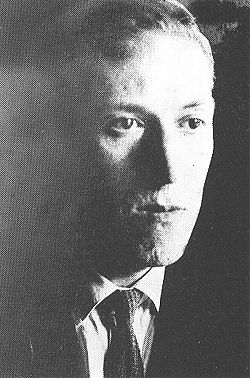Sinister Matters
Wednesday October 1, 2008 in books read 2008 | h.p. lovecraft
One must be careful about evocations, for the markers of old graves are not always accurate.
It’s October time again so my choice in fiction is already turning towards the dark, haunted and peculiar. What better place to start than H.P. Lovecraft? I’ve always found Lovecraft’s work terrifying because it is so convincing. Even though the stories are usually fantastic, there is so much attention to detail and specifics that he draws you much further into the macabre than any less precise writer would do. He also has the tremendous power of suggest and, like M.R. James, offers many a warning to the curious. As our opening quote hints, necromancy is a dangerous and never exact science.

The Case of Charles Dexter Ward is an excellent example of Lovecraft’s art. In this short novel, a young man slips further into apparent madness and perversity after learning that one of his ancestors dabbled rather too successfully in the occult. Even though the tale is effectively chilling, Lovecraft shows the reader very little. The evil and unwholesome deeds usually take place behind closed and locked doors, and the reader only gets glimpses of the true horror from the reactions of innocent bystanders. We rely on half heard disturbing cries and howls and unpleasant and overwhelming odours, always a favourite of Lovecraft. The descent into the depths of Ward is also well marked by his observers, his strange nocturnal habits, brief sightings and the muffled voices and secrecy.
Lovecraft also sets his scene with great skill. The account of Ward’s ancestor, Joseph Curwen, comes across like a work of fact in its studious attention to detail. It’s almost as if there is a legacy of horror built up brick by brick over the years before Ward mistakenly uncovers it. The best passage of the book, however, is when the bystander Dr Willett decides to investigate things:
Slowly, as befitted one of his years, he descended the ladder and reached the slimy steps below. This was ancient masonry, his torch told him; and upon the dripping walls he saw the unwholesome moss of centuries.
I really didn’t think this a sensible outing, and found his later discoveries even more unpleasant, but like poor Dr Willett, I feel like I’m slowly descending into a slimy and dark pit when I read Lovecraft, and sometimes the text is so layered and dense I find myself putting the book aside before realising I have only read a small number of pages.
Lovecraft’s short story The Dunwich Horror is successfully horrifying for many of the same reasons as The Case of Charles Dexter Ward. The backstory and chain of unsettling events, the odours, the sightings and the sounds. Much is relayed as first hand accounts of startled (and surviving) witnesses. There’s also the documented evidence, often present in ancient writings, ciphers and manuscripts:
He had not left the manuscript all night, but sat at his table under the electric light turning page after page with shaking hands as fast as he could decipher the cryptic text …. Toward the middle of the next night he drowsed off in his chair, but soon woke out of a tangle of nightmares almost as hideous as the truth and menaces to man’s existence that he had uncovered.
The Dunwich Horror is exhausting in its perseverance to unsettle you. Like all of Lovecraft’s work, you are only privy to half of the real horror. Just a glimpse, with the true terror just around the corner. But I still welcome the coming of October…
